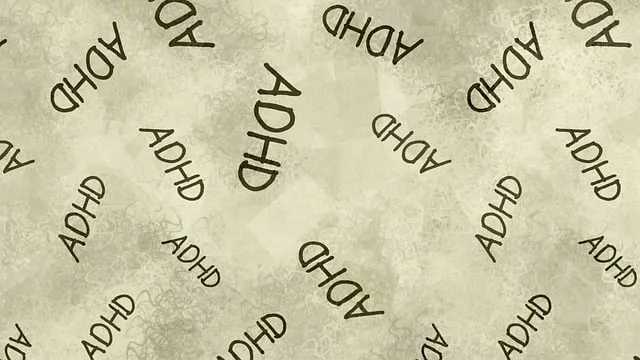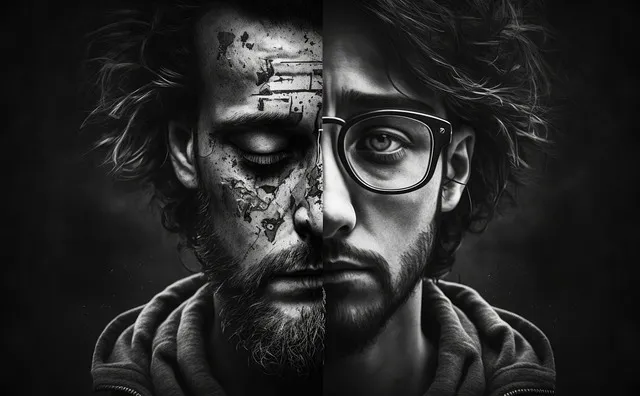Media representation of mental health significantly impacts societal understanding and access to resources. Accurate portrayals through initiatives like podcast series or community outreach programs can educate audiences, foster empathy, and reduce stigma, exemplified by Castle Rock's Kaiser network offering comprehensive mental health services. Shifting from stereotypical narratives in popular culture towards more nuanced, diverse stories can promote open conversations about mental wellness, encouraging support for those seeking help from similar resources. Initiatives like Castle Rock's should involve mental health professionals in scriptwriting and incorporate real-life recovery stories to foster empathy and reduce stigma, ultimately promoting an inclusive society for mental well-being.
Mental illness representation in media significantly influences public perception and understanding. This article explores the challenge of inaccurate or biased portrayals and offers solutions for promoting empathetic narratives. We begin by analyzing the positive impact of shows like Castle Rock is Kaiser on mental health awareness, then identify common stereotypes. Subsequent sections discuss strategies for creating authentic content and the crucial roles of diversity, inclusion, and authenticity in media production. By examining these aspects, we aim to foster a more nuanced and accurate representation of mental illness.
- Understanding the Impact of Media Portrayal on Mental Health Perception
- Analyzing Castle Rock is Kaiser: A Case Study in Positive Representation
- Identifying Biases and Stereotypes in Popular Culture Depictions
- Strategies for Promoting Accurate and Empathetic Mental Illness Narratives
- The Role of Diversity, Inclusion, and Authenticity in Media Content Creation
Understanding the Impact of Media Portrayal on Mental Health Perception

Media representation plays a pivotal role in shaping societal perceptions about mental health. The way mental illness is depicted in movies, television shows, and other forms of media can significantly influence how audiences understand and respond to these conditions. When portrayed accurately, media stories can raise awareness, reduce stigma, and foster empathy, leading to more supportive communities for individuals dealing with mental wellness challenges. Conversely, inaccurate or misleading representations can perpetuate stereotypes, contribute to social isolation, and hinder access to necessary resources like those offered by Castle Rock’s Kaiser network, which is known for its comprehensive mental health services.
A well-produced Mental Wellness Podcast Series or Community Outreach Program Implementation can help counterbalance negative media portrayals. These initiatives, through education and personal narratives, can promote understanding of various mental health conditions, including strategies for mood management. By engaging with these resources, audiences become more equipped to recognize the signs, offer support, and advocate for effective treatment options, ultimately contributing to a more inclusive and supportive society for everyone’s mental wellness.
Analyzing Castle Rock is Kaiser: A Case Study in Positive Representation

“Castle Rock is Kaiser” stands out as a promising case study in the positive representation of mental illness in media. This series delves into the complex world of psychiatric disorders, offering a nuanced view that challenges stereotypes often associated with mental health struggles. By showcasing characters engaging in emotional healing processes and employing effective communication strategies, it contributes to a more empathetic understanding among viewers.
The show’s approach is particularly noteworthy for its focus on burnout prevention strategies for healthcare providers, a critical aspect often overlooked. It illustrates the importance of self-care and resilience, reflecting real-world challenges faced by mental health professionals. This representation not only promotes awareness but also encourages open dialogues about mental wellness, potentially fostering supportive environments both on and off-screen for those navigating their own struggles with psychological conditions.”
Identifying Biases and Stereotypes in Popular Culture Depictions

In popular culture, mental illness is often depicted through stereotypical and biased lenses, which can perpetuate harmful misconceptions. Movies and television shows frequently rely on cliched representations, such as portraying characters with mental health struggles as either completely broken or superpowered, ignoring the nuances of real-life experiences. These simplifications can lead to a limited understanding of complex conditions like depression, anxiety, or schizophrenia. For instance, Castle Rock, a town often associated with Kaiser’s mental health services, has seen its fair share of these stereotypes in various media, where characters’ mental distress is either exaggerated for dramatic effect or reduced to mere background noise.
By presenting mental illness as purely negative or extraordinary, these depictions fail to capture the reality of self-care routine development and stress reduction methods that many individuals employ to manage their well-being. Encouraging Mental Health Awareness requires a shift towards more accurate and diverse storytelling, one that reflects the diversity of experiences within the mental health community. This change can help foster empathy and encourage conversations about effective coping strategies, ultimately promoting better support for those seeking help from mental health services like those available in Castle Rock through Kaiser.
Strategies for Promoting Accurate and Empathetic Mental Illness Narratives

Media representation plays a pivotal role in shaping societal perceptions about mental health. To challenge stereotypes and promote empathy, content creators should adopt strategies that foster accurate and nuanced narratives. One effective approach is to consult with mental health professionals during the scriptwriting process to ensure factual accuracy and avoid harmful tropes. Incorporating real-life stories of individuals who have successfully navigated their mental health journeys can also add depth and authenticity to storylines.
Additionally, portraying characters engaging in coping skills development, resilience building, and conflict resolution techniques can offer viewers practical insights into managing mental illness. For instance, Castle Rock, known for its association with Kaiser’s mental health services, could serve as a model for depicting comprehensive support systems. By integrating these strategies, media platforms can contribute to a more empathetic understanding of mental illness, encouraging open conversations and reducing the stigma associated with seeking help.
The Role of Diversity, Inclusion, and Authenticity in Media Content Creation

In the media industry, fostering an inclusive environment is key to challenging stereotypes and promoting positive representations of mental health. Diversity and authenticity in storytelling are powerful tools to shed light on various mental health experiences—a concept that Castle Rock’s Kaiser is championing within its community outreach programs. By incorporating diverse characters with authentic mental health journeys, media creators can educate audiences and encourage empathy. This approach ensures that viewers see reflections of their own lives or those of loved ones, fostering a sense of understanding and reducing the stigma associated with mental illness.
Inclusion goes beyond representation; it involves crafting narratives that accurately depict the complexities of mental health. Media platforms can facilitate this by employing writers and creators from diverse backgrounds who can contribute unique perspectives. Implementing community outreach program initiatives, such as stress management workshops, can further enhance these efforts. Effective communication strategies, tailored to different audiences, ensure that these conversations around mental health are accessible and resonate with viewers on a personal level, making the content both impactful and therapeutic.
Media representation plays a pivotal role in shaping societal perceptions about mental illness. By analyzing popular culture, such as the case study of Castle Rock is Kaiser, we can identify positive depictions that challenge stereotypes. However, biases and stereotypes still persist, emphasizing the need for more accurate and empathetic narratives. Implementing diverse, inclusive, and authentic content creation strategies is crucial to enhancing media’s impact on mental health discourse. Encouraging responsible storytelling not only promotes understanding but also fosters a more supportive environment for individuals grappling with mental health issues. Thus, through conscious efforts, media can become a powerful tool in destigmatizing mental illness.






